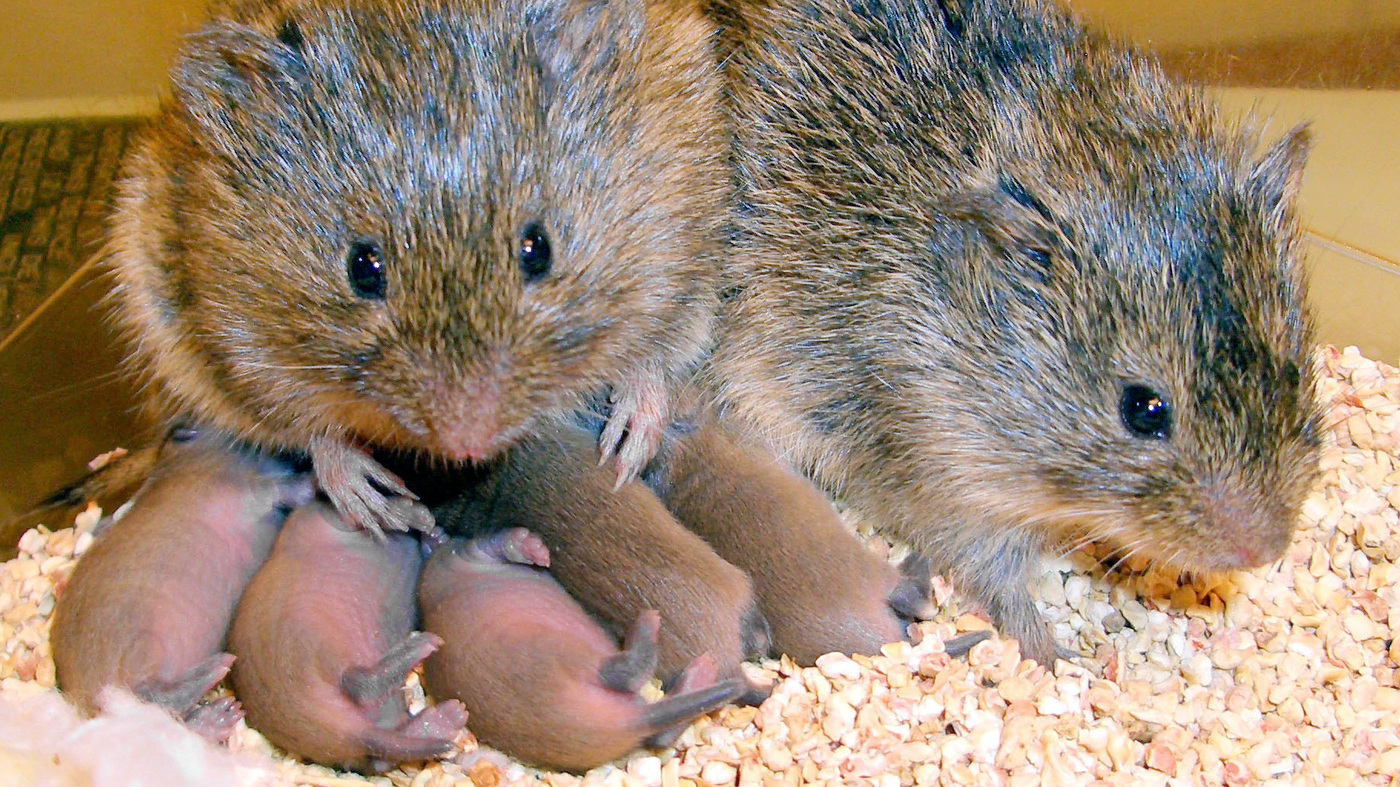Voles are small rodents that are relatives of lemmings and hamsters, but with a stouter body; a longer, hairy tail; a slightly rounder head; smaller eyes and ears.
 The prairie vole is a notable animal model for its monogamous social fidelity, since the male is usually socially faithful to the female, and shares in the raising of pups.
The prairie vole is a notable animal model for its monogamous social fidelity, since the male is usually socially faithful to the female, and shares in the raising of pups.
Voles comfort mistreated vole. This type of empathetic behavior has previously been thought to occur only in animals with advanced cognition such as humans, apes and elephants.
This uniqueness in behavior is related to the oxytocin and vasopressin hormones. The oxytocin receptors of the female prairie vole brain are located more densely in the reward system, and have more receptors than other species, which causes 'addiction' to the social behavior.
Considerable work is needed to determine the extent to which research results from vole models may apply to bonding animals such as humans and non-bonding animals such as chimpanzees.
Dextroamphetamine is a central nervous system (CNS) stimulant that is prescribed for the treatment of attention deficit hyperactivity disorder (ADHD) and narcolepsy. It is also used as an athletic performance and cognitive enhancer, and recreationally as an aphrodisiac.
The effects of amphetamine's in humans is mostly derived through increased cellular communication or neurotransmission of dopamine, serotonin, norepinephrine, epinephrine, histamine, CART peptides, endogenous opioids, adrenocorticotropic hormone, corticosteroids, and glutamate.
Previous studies have shown that 3-day d-amphetamine treatment effectively induced conditioned place preferences and impaired pair bonding behaviors in prairie voles. Using this established animal model and treatment regimen, the authors examined the effects of the demonstrated threshold rewarding dose of d-amphetamine on various behaviors and their potential underlying neurochemical systems in the brain of female prairie voles.
A new publication shows that 3-day d-amphetamine injections impaired social recognition and decreased depressive-like behavior in females without affecting their locomotion and anxiety-like behaviors.
D-amphetamine treatment also decreased neuronal activation indicated by the labeling of the early growth response protein 1 as well as the number of neurons double-labeled for Egr-1 and corticotrophin-releasing hormone in the dentate gyrus of the hippocampus and paraventricular nucleus of the hypothalamus in the brain.
Corticotropin is a peptide hormone involved in stress responses. EGR-1 is an important transcription factor in memory formation. It has an essential role in brain neuron epigenetic reprogramming. EGR-1 recruits the TET1 protein that initiates a pathway of DNA demethylation. Removing DNA methylation marks allows the activation of downstream genes. EGR-1, together with TET1, is employed in programming the distribution of methylation sites on brain DNA during brain development, in learning and in long-term neuronal plasticity.
Further, d-amphetamine treatment decreased the number of neurons double-labeled for Egr-1 and tyrosine hydroxylase but did not affect oxytocinergic neurons in the paraventricular nucleus or cell proliferation and neurogenesis markers in the dentate gyrus.
These data not only demonstrate potential roles of the brain corticotrophin-releasing hormone and dopamine systems in mediating disrupted social recognition and depressive-like behaviors by d-amphetamine in female prairie voles, but also further confirm the utility of the prairie vole model for studying interactions between psychostimulants and social behaviors.
